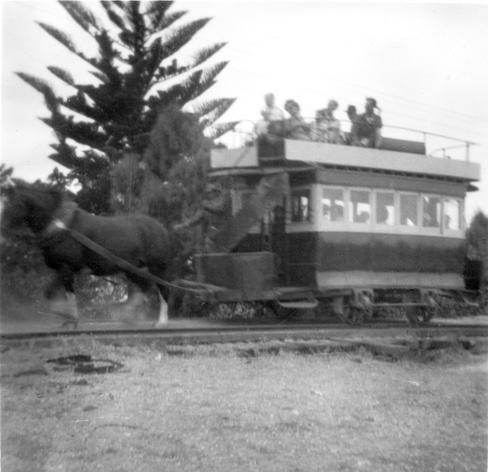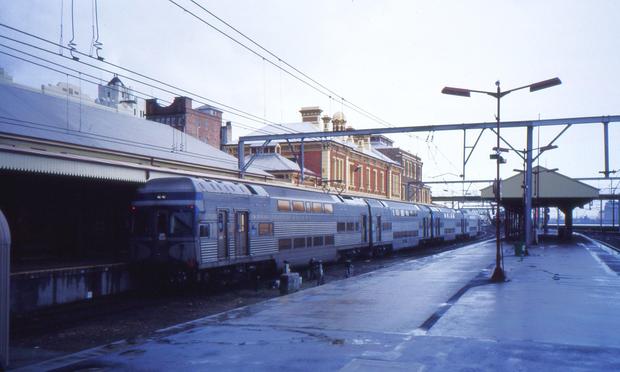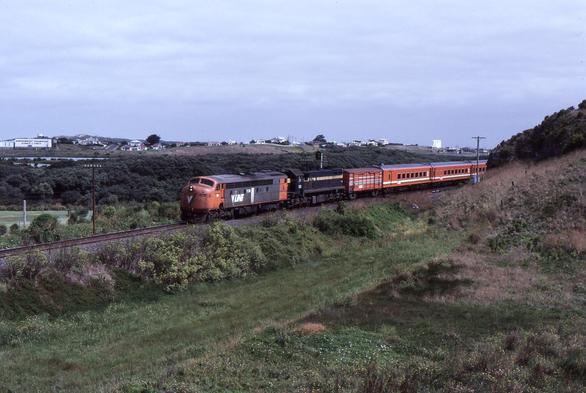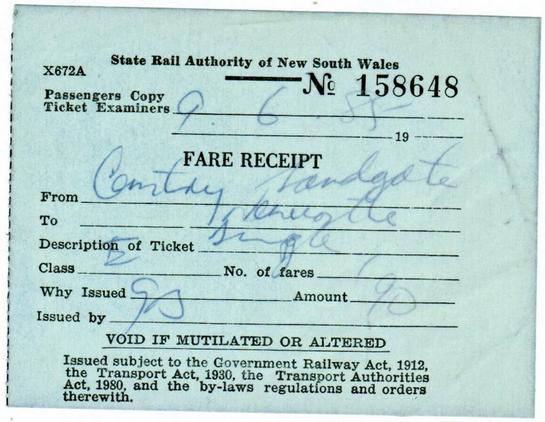@backupbear I hear you.
Publisher of rail maps & public transport timetables. Photographer, public transport advocate and enjoyer of irony and incongruities. Ethics matter more than politics.
Today, VLine passenger trains from Melbourne to Traralgon (and on to Bairnsdale) are operated entirely by VLocity diesel railcars. The semaphore signalling has been replaced with modern colour light signals, and the track layouts rationalised to remove goods sidings and in some cases (including at Morwell) replace them with additional passenger platforms for today's increased passenger traffic.
25 of these 1500V DC L class electric locos were built in 1953/54 by English Electric and Dick Kerr in the UK, presumably to support the recovery of the UK's manufacturing industry after WW2. All ran until the 1980s. This was L1150's last run, she was withdrawn that evening. Sister 1162 lasted two more days, maybe on freight duties before her withdrawal on June 15. Most Ls were scrapped, just 4 now survive, none in operating condition. 1150 is on display at the Williamstown Railway museum.
The broad gauge railway to Traralgon, 158km east of Melbourne, had been electrified at 1500V DC in the 1950s to support carriage of coal from the brown coal mines of the Latrobe Valley, but almost all trains, goods and passenger, were thereafter hauled by these L class electric locomotives. Until, that is, coal and general goods traffic declined, and the locos and overhead wiring infrastructure reached life expiry by 1987.
Today's historic photo of the day: On a dark and wintry day 38 years ago today, class leader of VLine's broad gauge L class 1500VDC electric loco fleet, L1150 'R G Wishart', heads the last ever electric Traralgon to Melbourne passenger #train no 8438, at Morwell, Vic, June 13 1987
In the months leading up to this, electric traction on Traralgon trains had been gradually replaced by diesel, and by this day that had basically been completed. This train was promoted as the 'Farewell L class' trip
The tramcar seen here, having been built in 1883, is the oldest in service vehicle I have featured in this series of photos. Heck, even back in 1954 it was ancient - being over 70 years old then. And judging by the droop on the underframe, it was feeling its age too.
So, you'd think that was end of it. Well, no. A tractor powered 'trackless tram' took over in late 1956, and this ran for 30 years until 1986. Why did it cease in 1986? Well, 1986 was 150th Jubilee of South Australia, and one of the celebratory projects was reconstruction of the horse tramway from Victor Harbor to Granite Island along the route of the original tramway. That service runs today with four brand new horse trams built in the style of the original cars
In June 1954, the Granite Island causeway was rebuilt without rails. The isolated tramway on Granite Island continued with tram no 5 alone until early 1956 when it was closed and the tram put on static display at the entrance to the jetty. Apparently it was later 'pushed off the edge into the sea'.
SAR ran a number of horse tramways around the state. The two cars at Victor Harbor at this time had been built in 1883. As far as I can tell, no 5 started life on the Glanville to Largs Jetty railway in 1883, then three years later in 1886 was sent to Gawler until 1902 then it went to Moonta. No 6 was also at Moonta and in 1931, when the SAR closed the Moonta tramways, it sent trams 5 and 6 to Victor Harbor to run the Granite Island tramway where they operated for the next 25 years.
The Granite Island horse tram was a 1.2km long 1600mm broad gauge tramway built as an extension of the South Australian Railways Victor Harbor railway across a causeway and along the north shore of Granite Island. Built to carry goods between ships and trains, the popularity of the area among tourists meant a passenger tram service was offered from 1894.
Today's historic photo of the day: Granite Island horse #tram no 5 or no 6 at Victor Harbor, SA, in early 1954.
This shot comes from a family photo album that belonged, I believe, to my great aunt. There are very few shots of rail interest, but this one sure is. It's not dated, but it sits in the album between photos of 'Queens Visit' in Adelaide and Ballarat with crowds and floral displays of crowns etc, so that most likely makes it 1954.
@peter Next month is Keith Moon.
For most of its life, the station was served by steam hauled trains, and later diesel, but from this weekend onward trains to the south were electric.
Sadly, of course, trains no longer run to Newcastle, with the line having been truncated in 2014 initially to Hamilton, although nowadays trains run as far as Newcastle Interchange station.
The V sets do however still run, although the first of them have recently been retired, so their days are numbered.
Today's historic photo of the day: 41 years ago today, a double-deck electric V set sits ready to run a service to Sydney on the opening weekend of electric #trains at Newcastle, NSW, June 11 1984.
Newcastle station was a 4 platform stub-end terminal station located in Scott Street adjacent to the central business district of NSW's second city. The station was served by regular trains to and from Sydney as well as local trains to suburbs, nearby towns and the lower Hunter Valley.
@NewtonMark I remember at university writing a Prolog progam to solve the Towers of Hanoi. As I recall, if you do it recursively, it can be done in just 3 or 4 lines of code. Something like move tower(n) = move top disc then move tower(n-1) then replace top disc.
Whilst it wasn't true when this photo was taken, nowadays, this train was just approaching the curve, just east of Warrnambool station, which is today the southernmost point in Australia on which regular passenger trains operate. Just beyond those dunes on the horizon is the Southern Ocean, beyond which is Antarctica.
Today, VLine rail services to Warrnambool have been strengthened to five return passenger trains each day and these trains are now run by VLocity diesel railcars. On weekdays there is also a scheduled Pacific National container train that runs through here between Appleton Dock in Melbourne and Westvic siding, about 3km west of Warrnambool station.
Today's historic photo of the day: A passenger #train bound for Melbourne headed by locos S309 and X31 had just departed Warrnambool, Vic, March 9 1987.
Warrnambool is on Victoria's south coast, 267km west of Melbourne by rail on Victoria's broad-gauge South-Western line. Until 1977, passenger trains had run beyond Warrnambool to and from Port Fairy, but they were then cut back to run only as far as Warrnambool and the line beyond Dennington (4km west of Warrnambool) was closed and lifted.
But what's that about buying a ticket out of the cemetery? Well whilst there were no tickets sold in the cemetery, I boarded that train to travel back to Newcastle, and remarkably there were ticket inspectors on board that day. They approached me straight away and wrote me a ticket before we got to the junction - which meant I spent my entire ride on this branch buying a ticket. And here it is...
Sandgate Cemetery trains were withdrawn in October 1985, just four months after this photo. Nowadays, local Newcastle Interchange to Maitland/Telarah trains still call at Sandgate station which is just a short walk away, but the short branch into the cemetery is no longer used.
Two-car diesel trains of this type were all withdrawn from service by 2007, but set 638/738 was acquired for preservation by the Cowra-based Lachlan Valley Railway.




